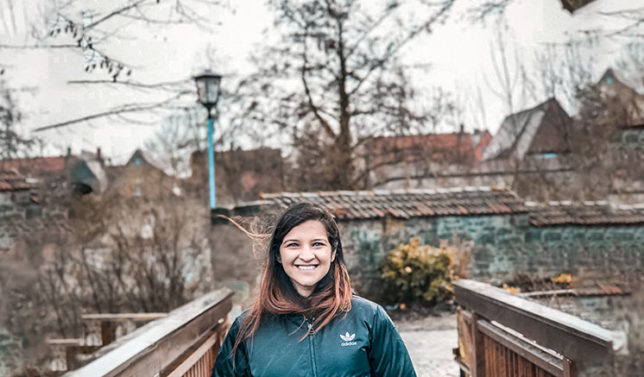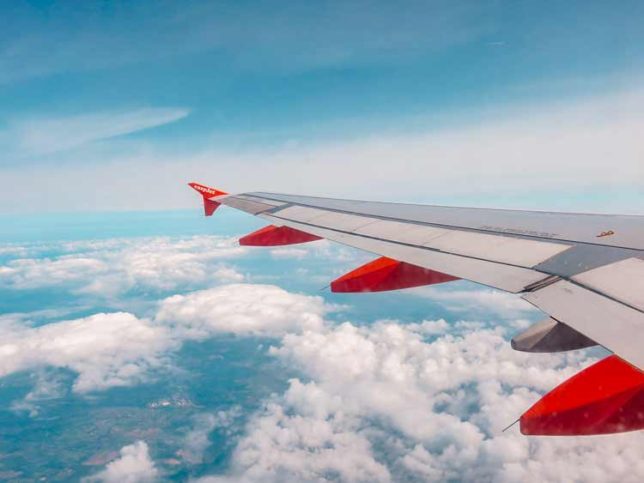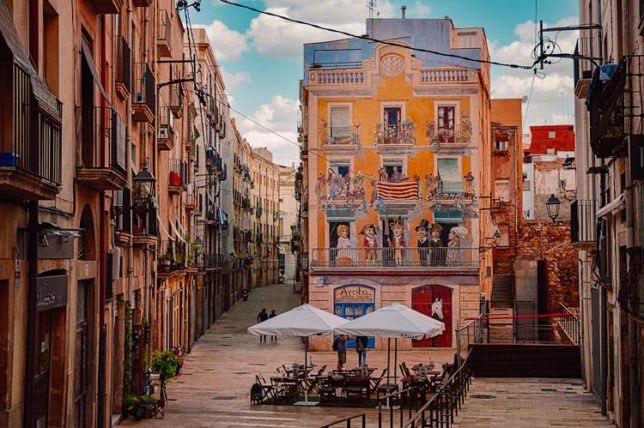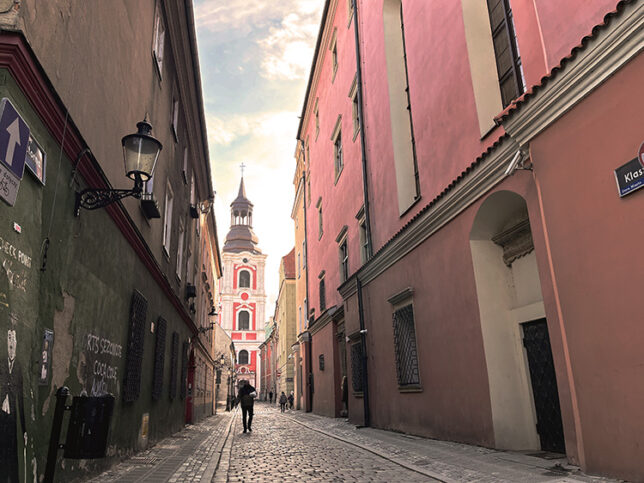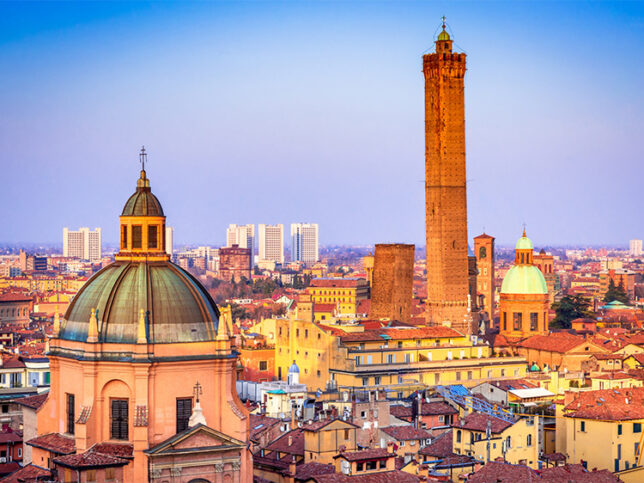Munich is a microcosm of Germany as we know it. The city seems to have it all – outdoor beer gardens, abundant foliage, expansive parks, fast cars, and a rich history steeped in Bavarian charm.
But as captivating as Munich is, it’s also a gateway to some of the best destinations in Germany and beyond.
Think storybook castles perched high in the Alps, quaint medieval towns that feel like stepping into a time machine, or serene lakeside escapes – the options for day trips from Munich are varied and enticing.
In this guide, I’ll take you through ten unforgettable day trips from the city. From iconic sights like Neuschwanstein Castle to hidden gems like Regensburg, get ready to explore (with a side of pretzels and a colossal beer stein!)
1. NEUSCHWANSTEIN CASTLE

If you’re a fan of fairy tales, Neuschwanstein Castle is the ultimate day trip from Munich.
Perched dramatically on a rugged hill with the Bavarian Alps as its backdrop, this larger than life castle looks like it’s been pulled straight from the pages of a storybook… or, more fittingly, the opening credits of a Disney film.
In fact, it’s said to have inspired Walt Disney’s design for Sleeping Beauty’s Castle.
King Ludwig II of Bavaria commissioned Schloss Neuschwanstein in the 19th century to be his fanciful abode. The castle’s opulent interiors are a tribute to Ludwig’s love for music, mythology, and Wagnerian opera. Be sure to look out for the Singers’ Hall and the Throne Room, each dripping with grandeur and detail.
The backstory of this charming castle, though, is a lot less idyllic .
Burdened with the responsibility of overseeing an entire kingdom at a tender age, and losing it to Prussia just 2 years later, Ludwig retreated into himself. His brilliant imagination found refuge in building gorgeous fairytale castles inspired by medieval legend, art and music. Almost as if to create a fantasy world. An escape from reality .
This fascination soon developed into a pathological obsession, and after massive administrative and financial losses to the kingdom, Ludwig II was declared clinically insane, and deposed from the throne .
He built several castles but Neuschwanstein was his most ambitious project. Poor thing he didn’t really get to see it completed – King Ludwig II died a mysterious death much earlier .
How to Get There:
Drive/take a train to Füssen (you’ll drive through the Romantic Road, one of the prettiest road trip routes in Germany) and take a short bus ride to Hohenschwangau. From there, you can hike up the hill to the castle or opt for a horse-drawn carriage if you’re feeling regal. Stop at the Marienbrücke on the way up, which offers breathtaking views of the castle and its surroundings.
Pro Tip:
For the best experience, start early in the day to avoid the crowds. Guided tours are the only way to explore the interior, and tickets often sell out quickly, so book ahead. Pair your visit with a stop at nearby Hohenschwangau Castle, Ludwig’s childhood home, for a deeper dive into Bavarian royal history.
2. SALZBURG, AUSTRIA
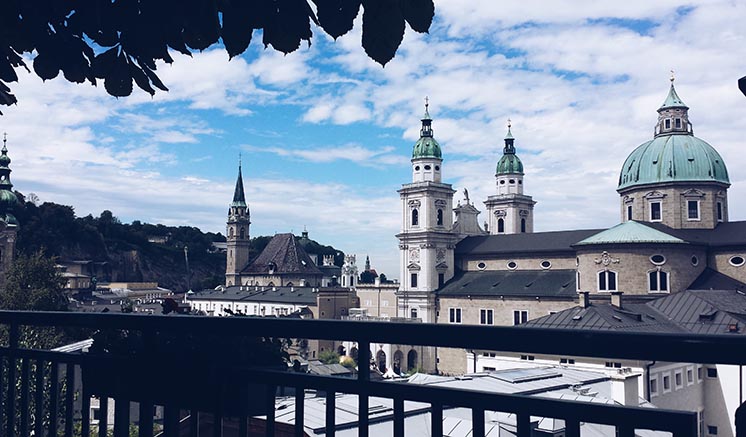
Just two hours by train from Munich, Salzburg is a day trip that blends cultural charm, scenic beauty, and a dash of musical magic (cue Symphony No. 40).
Situated at the foot of the Alps, Salzburg is the birthplace of Wolfgang Amadeus Mozart and the setting for the iconic movie The Sound of Music. With its elegant Baroque architecture and the dreamy Old Town (a UNESCO World Heritage Site), Salzburg is a feast for the senses.
On a day trip from Munich, you can visit Mirabell Palace and Gardens. Fans of The Sound of Music will recognize the gardens as the setting for “Do-Re-Mi” (don’t resist the urge to hum along as you explore!).
Next, cross the Salzach River into the Altstadt (Old Town). Here, you’ll find narrow, cobblestone streets lined with colorful buildings, inviting shops, and cute cafes. Also check out Mozart’s Birthplace for a glimpse into the early life of one of history’s greatest composers.
For panoramic views, take the funicular up to Hohensalzburg Fortress, one of the largest medieval castles in Europe. The fortress houses a history museum and sweeping vistas of Salzburg and the surrounding Alps.
Round out your day with a stroll and souvenir shopping at Getreidegasse, Salzburg’s famous shopping street.
How to Get There:
The easiest way to reach Salzburg from Munich is by train, with frequent direct services running from Munich Hauptbahnhof (main station). The journey takes about 1 hour and 45 minutes. Driving takes you 1.5 hours via the A8 highway.
Pro Tip:
If time permits, stop by St. Peter’s Abbey and its beautiful cemetery.
3. NUREMBERG, GERMANY
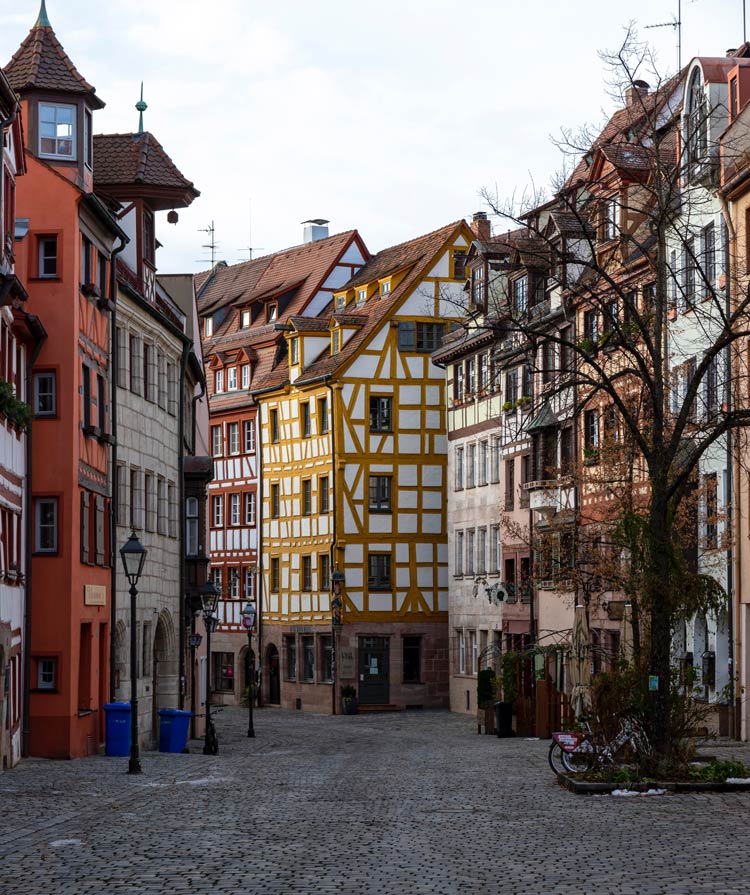
About an hour north of Munich, Nuremberg stands as a city so old, it feels like taking a crash course in European history.
Abounding in medieval charm and a key player in both the Holy Roman Empire and the post-WWII world, Nuremberg offers a fantastic blend of the old and the new.
The Nuremberg Castle, with its panoramic views, looms large over the city. The castle walls are a defining feature, running parallels wherever you go. The Albrecht Dürer House, home to the famed Renaissance artist, is a treat for art lovers, while the hauntingly poignant Documentation Center offers a sobering but essential look at the city’s role during World War II.
The Old Town is a labyrinth of narrow alleyways, half-timbered houses, and cozy beer gardens where you can indulge in Nürnberger Bratwurst and the delicious Schanzenbräu Rotbier.
How to Get There:
Nuremberg is an easy day trip from Munich. The high-speed ICE train whisks you there in about 1 hour and 15 minutes, with frequent departures throughout the day. Alternatively, you can drive about 1 hour and 45 minutes via the A9 motorway.
Pro Tip:
If you’re visiting during December, don’t miss the Nuremberg Christkindlesmarkt – one of the oldest and most famous Christmas markets in the world. It’s a magical experience, complete with mulled wine, tons of lights, and enough festive cheer to warm even the chilliest winter day.
4. REGENSBURG, GERMANY
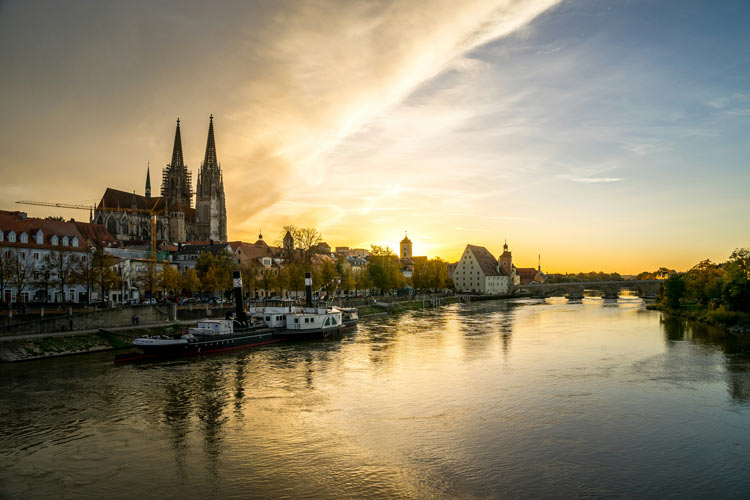
Nestled along the Danube River, Regensburg is a UNESCO World Heritage Site for a reason – it’s a perfect blend of history, riverside appeal, and architectural brilliance.
Just 1.5 hours from Munich, it’s one of those day trips where you can leave in the morning and feel like you’ve traveled back centuries by lunchtime.
The heart of Regensburg is its Old Town, a maze of cobblestone streets and medieval buildings that have somehow dodged the wear and tear of time. The Steinerne Brücke (Old Stone Bridge), built in the 12th century, not only offers stunning views of the river but also connects you to the city’s rich trading history.
Dominating the skyline is St. Peter’s Cathedral, a Gothic masterpiece that’ll have you craning your neck in awe. Step inside to marvel at its soaring stained-glass windows and intricate details.
To catch a breather, pop into one of the many cafes along the riverbank, order a slice of kuchen (cake), and let the charm of the city wash over you.
How to Get There:
Regular trains from Munich make the journey to Regensburg in about 1.5 hours. You can also take a Flixbus (1.5 hours). By road it’s a scenic 90-minute trip along the A93.
Pro Tip:
For a unique perspective on Regensburg, take a Bimmelbahn Train tour. You can catch the highlights of the city in motion. Plus it’s a fun activity if you’re visiting Regensburg with kids.
5. ROTHENBURG OB DER TAUBER, GERMANY
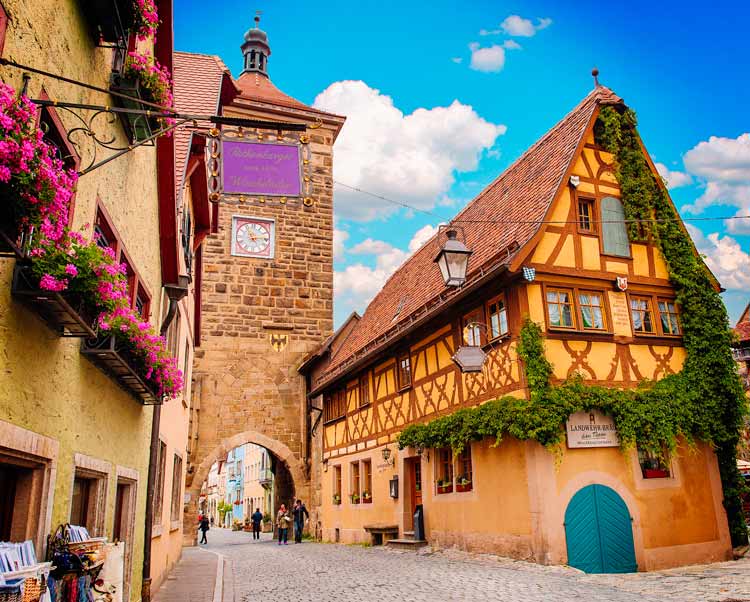
Imagine visiting a place where every corner feels like it was plucked out of a fairytale. That’s Rothenburg ob der Tauber.
Aptly located along the Romantic Road, this medieval gem is one of Germany’s prettiest and most well-preserved towns, making it a favorite day trip from Munich.
Rothenburg ob der Tauber has enough cobblestone streets, half-timbered houses, and colorful facades to match its delightfully oversized name 😉
The Plönlein, a fork in the road framed by storybook buildings and a stone tower, is one of Rothenburg’s most photographed spots.
The main Old Town Square houses some of the key historical buildings of Rothenburg, and are well worth a guided tour.
You can walk along the medieval city walls, which offer stunning views of the surrounding countryside. You can also catch a glimpse of the Gerlachschmiede, which to me looks like a Hansel and Gretel gingerbread house.
After a long day of sightseeing, rest your legs (and fill your belly) at a nice cafe on Schmiedgasse.
How to Get There:
Take a train to Ansbach or Steinach, then transfer to a regional train heading to Rothenburg. The train journey takes about 3 hours. Driving is also an option, with a scenic 2.5-hour route along the Romantic Road.
Pro Tip:
If you’re visiting in December, the town’s Christmas market transforms Rothenburg into a winter wonderland. 100% recommended!
[You Might Like: 5 Magical Days on the Germany's Romantic Road]
6. GARMISCH-PARTENKIRCHEN & ZUGSPTIZE
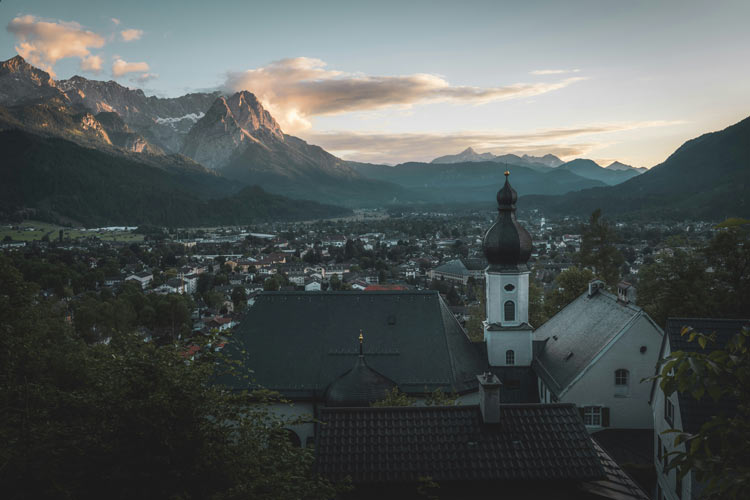
Sitting at the base of the Bavarian Alps, Garmisch-Partenkirchen feels like the ultimate alpine postcard coming to life.
With its rustic charm, crisp mountain air, and jaw-dropping views, this little town is a magnet for day-trippers from Munich – both outdoor enthusiasts and those looking for a true mountain escape. It’s also just a short trip from the Zugspitze, the highest peak in Germany.
The town itself is divided into two distinct parts: Garmisch, with its more modern feel, and Partenkirchen, which retains its traditional Bavarian flair. Take a stroll through the charming streets, stop by a beer garden for a local brew, or simply soak in the stunning alpine backdrop.
My favorite part, though, is a venture up to Zugspitze. You can take a cable car or the cogwheel train to the top. At over 9,500 feet, you’ll be rewarded with panoramic views of Germany, Austria, and Switzerland on clear days. It’s a place of stupefying beauty, a place to linger and marvel endlessly.
How to Get There:
Garmisch-Partenkirchen is just under 2 hours from Munich by train. From the Garmisch train station, hop on a bus or take a taxi to the cable car station for Zugspitze. Alternatively, you can rent a car and drive, which will take around 1.5 hours via the A95 and B2.
Pro Tip:
If you’re planning to visit Zugspitze, consider getting a “Zugspitze Ticket” that includes the round-trip cable car ride and access to the glacier.
7. DACHAU CONCENTRATION CAMP MEMORIAL SITE
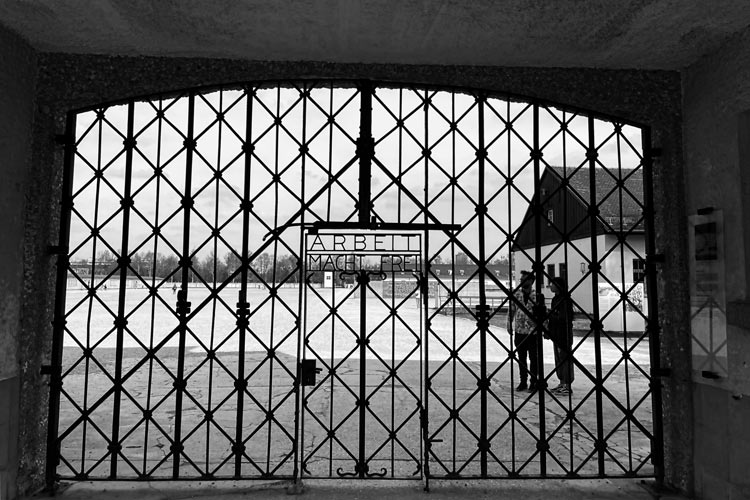
Not your typical “tourist attraction,” but it’s undoubtedly one of the most important and must-do day trips from Munich.
Dachau was the first Nazi concentration camp, opened in 1933, and it became a blueprint for the horrors that would unfold across Europe in the subsequent years.
Walking through the grounds today, there’s a quiet reverence in the air. The camp’s barracks, now converted into museum exhibits, reveal unimaginable suffering, while the haunting gas chamber and crematorium stand as stark reminders of the atrocities committed here.
For a first-time visitor, it’s often an emotionally overwhelming experience. The site’s comprehensive exhibits, ranging from personal testimonies to photographs and artifacts, offer a deeply human perspective on the atrocities. The memorial site itself is vast, so plan on taking a few hours to fully absorb it all.
How to Get There:
You can take a direct S2 train from Munich’s Hauptbahnhof (main station) to Dachau in under 20 minutes. From the Dachau station, there are regular buses (or a 20-minute walk) that will take you directly to the memorial.
Pro Tip:
For a more in-depth experience, consider taking the guided tour available at the Memorial Site. Guided tours are available in English daily at 11 am and 1 pm.
8. HERRENCHIEMSEE PALACE & CHIEMSEE LAKE
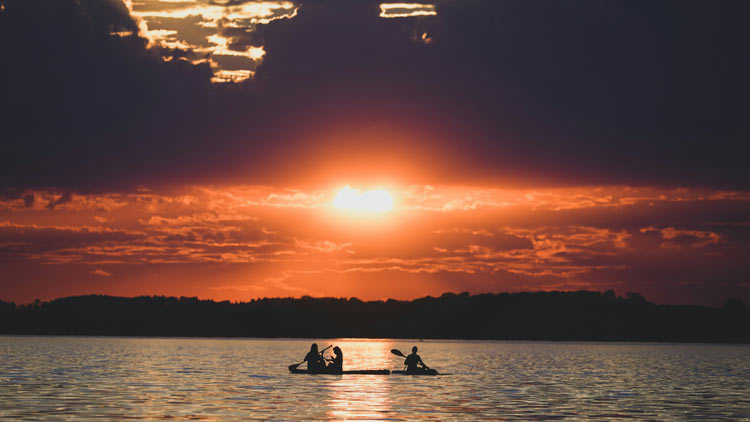
Chiemsee is Bavaria’s largest lake, framed by the Alps and dotted with picturesque islands. A visit to this “Bavarian Sea” (as it’s often called) is one of the most rewarding day trips from Munich.
Combine it with Herrenchiemsee Palace, and you get an exquisite blend of natural beauty, history, and royal indulgence.
The palace, built by King Ludwig II (yup, the same guy who comissioned Neuschwanstein), is Bavaria’s answer to Versailles.
The palace is famously unfinished – Ludwig’s extravagant spending ran out before completion – but what’s there is nothing short of spectacular. Highlights include The Hall of Mirrors (modeled after Versailles’ famous hall), The State Bedroom featuring intricate gold leaf work and ornate textiles, and The Gardens and Fountains.
Getting to Herrenchiemsee involves a scenic ferry ride across the lake. You’ll glide past Fraueninsel, a smaller island home to a Benedictine convent, charming artists’ studios, and idyllic waterfront cafes perfect for a leisurely stop.
How to Get There:
From Munich, hop on a train to Prien am Chiemsee station (just over an hour). The station is within walking distance of the ferry terminal, where boats run regularly to Herreninsel and Fraueninsel.
Pro tip:
The area has excellent hikes. Plan a few extra hours to explore the trails around Chiemsee, especially Hochfelln or Kampenwand, for unforgettable views of the lake and mountains.
9. BERCHTESGADEN & EAGLE’S NEST
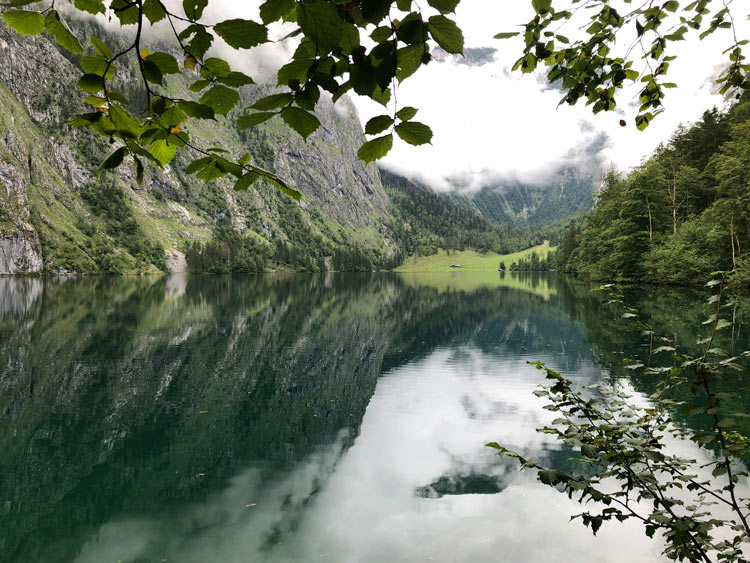
Tucked into Germany’s southeastern corner, Berchtesgaden is a peaceful Alpine town surrounded by some of the most striking landscapes in Bavaria.
For day-trippers from Munich, it offers a mix of natural beauty and fascinating (if complex) history.
One of the main draws here is the Eagle’s Nest (Kehlsteinhaus), a historic mountaintop retreat. Originally built as a gift for Adolf Hitler’s 50th birthday, it was used exclusively by Nazi Party members for government and social meetings. Take the specially designed mountain bus or hike the steep trail to reach this iconic spot, where you’ll be greeted with 360-degree views that stretch into Austria.
Berchtesgaden offers plenty to explore beyond the Eagle’s Nest. Königssee, a serene, emerald-green lake framed by steep cliffs, is perfect for a boat ride to St. Bartholomew’s Church, a picture-perfect chapel on its shores. The nearby Berchtesgaden Salt Mine is another unique stop. You can take a guided tour into its tunnels, complete with miner’s slides and an underground salt lake.
How to Get There:
Berchtesgaden is about two hours from Munich by car, via the A8 and B20 highways. Regional trains run from Munich to Berchtesgaden with a transfer in Freilassing, taking around 3 hours.
Pro Tip:
If you plan to visit both the Eagle’s Nest and Königssee, prioritize the Eagle’s Nest in the morning to avoid crowds, then relax with a scenic lake stroll or boat ride in the afternoon. Also, pack a light jacket – even in the summer, it can be chilly at the summit!
10. AUGSBURG
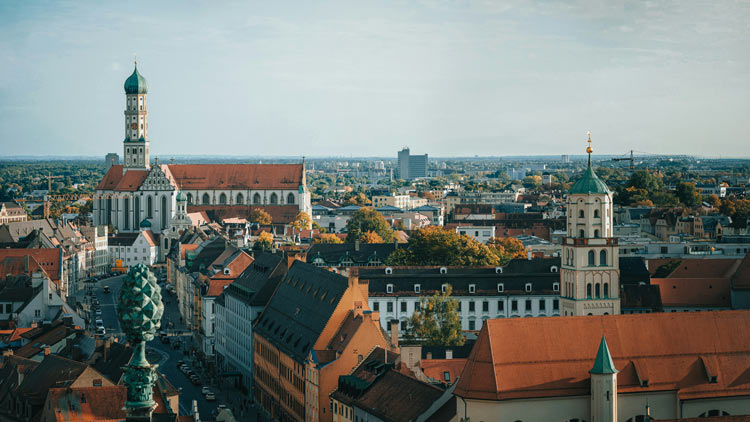
Augsburg is one of Germany’s oldest cities and is brimming with history and Renaissance elegance. Founded by the Romans over 2,000 years ago, Augsburg seamlessly blends its ancient roots with a palpable modern vibe. Plus it’s an easily accessible day trip from Munich.
For architecture lovers, the Augsburg Town Hall (Rathaus) is a masterpiece of Renaissance design. Its Golden Hall, with a ceiling adorned in shimmering gold, is worth the trip alone. Nearby, a short climb up the Perlach Tower rewards you with sweeping views over the city.
Also worth checking out are St. Anne’s Church (where Martin Luther once stayed), and the Maximilianstraße, a bustling boulevard lined with fountains and Baroque houses.
How to Get There:
The regional train gets you from Munich to Augsburg in about 35 minutes. Driving takes roughly an hour via the A8 motorway.
Pro Tip:
Augsburg is especially worth visiting during its annual Plärrer festival, Bavaria’s third-largest folk festival. Held for about two weeks in early summer/late spring, it’s a lively event filled with music, traditional food, and carnival rides – like a mini version of Munich’s Oktoberfest, but minus the massive crowds.


